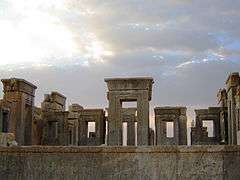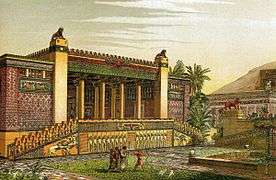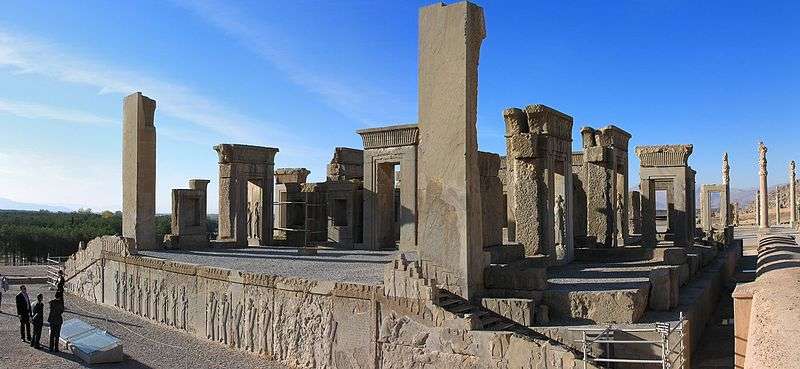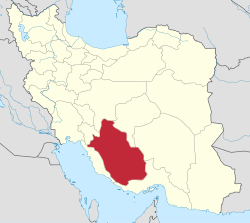Tachara
| Tachara | |
|---|---|
 Ruins of the Tachara, Persepolis | |
| General information | |
| Status | in ruins |
| Architectural style | Achaemenid architecture |
| Location |
Persepolis Marvdasht, Fars Province |
| Country |
|
| Coordinates | 29°56′04″N 52°53′22″E / 29.9344°N 52.88955°E |
| Technical details | |
| Material | stone |
| Website | |
| UNESCO: Persepolis | |
The Tachara, or the Tachar Château, also referred to as the Palace of Darius the Great, was the exclusive building of Darius I at Persepolis, Marvdasht, Iran. It is located 70 km northeast of the modern city of Shiraz in Fars Province.
It is one of the interior buildings of Persepolis, and is made of gray stone. Its construction was ordered by Darius I but only a small portion of it was finished under his rule. It was completed after the death of Darius I in 486, by his son and successor, Xerxes I, who called the house a Taçara, translated as "the winter palace" in Old Persian. It was then used by Artaxerxes I. Its ruins are immediately south of the Apadana.
The Tachara, measuring 1,160 square meters (12,500 square feet), is the smallest of the palace buildings in Persepolis. Its main room is a mere 15.15 m × 15.42 m (49.7 ft × 50.6 ft) with three rows of four columns.

Like many other parts of Persepolis, the Tachara has reliefs of tribute-bearing dignitaries. This palace was one of the few structures that escaped destruction in the burning of the complex by Alexander the Great.
The Tachara stands back to back to the Apadana, and is oriented southward. The function of the building, however, was more ceremonial than residential. Upon completion, it served in conjunction with the earlier south oriented entrance stairs as the Nowruz venue until the other buildings that would comprise Persepolis could be finished, which included a provisional union of the Apadana, the Throne Hall, and a Banquet Hall.
As the first of the palace structures on the Terrace, the Tachara was constructed of the finest quality stone. The surface was almost completely black and polished to a glossy brilliance. This surface treatment combined with the high quality stone is the reason for it being the most intact of all ruins at Persepolis today. Although its mud block walls have completely disintegrated, the enormous stone blocks of the door and window frames have survived. A complete window measuring 2.65 m × 2.65 m × 1.70 m (8.7 ft × 8.7 ft × 5.6 ft) was carved from a single block of stone and weighed 18 tons. The door frame was fashioned from three separate monoliths and weighed 75 tons.
Darius the Great's pride at the superb craftsmanship is evident by his ordering the following inscription on all 18 niches and window frames: Frames of stone, made for the Palace of King Darius.


